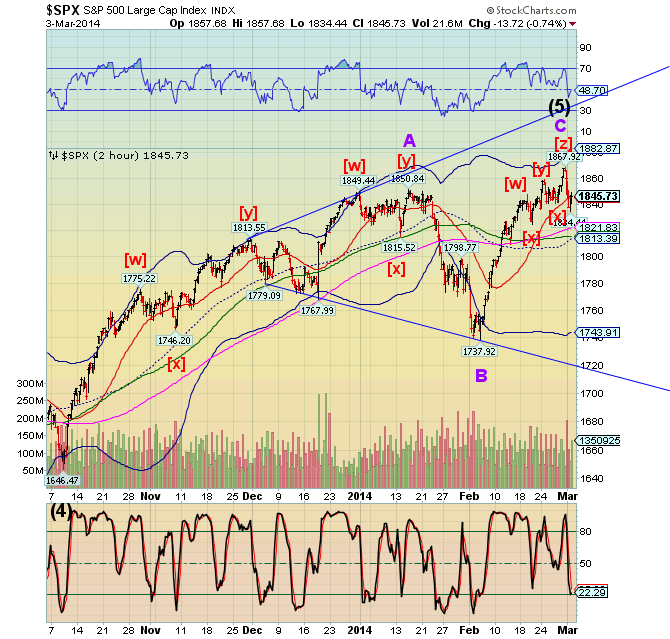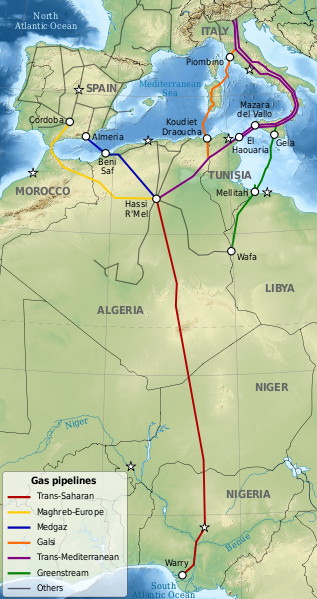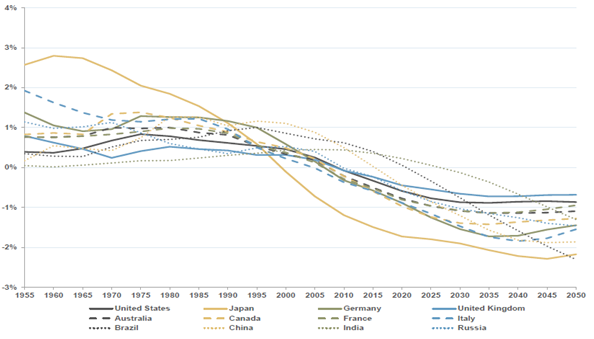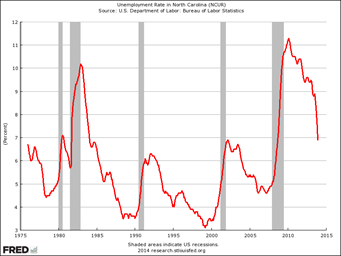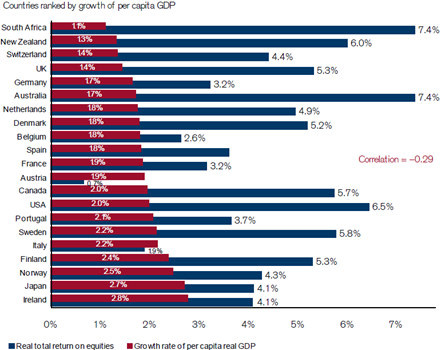by Pater Tenebrarum
Newly Appointed Chief of Ukrainian Navy and Other Military Leaders Defect to Crimea
The new government in Kiev quickly disbanded the former riot police Berkut, as well as firing all top Ukrainian military commanders in an attempt to install commanders held to be more likely to obey its orders. In an ironic twist, the new commander-in-chief of the Ukrainian navy, rear admiral Denis Berezovsky – appointed by interim president Turchynov only on Saturday in order to replace Yuri Ilyin – decided to defect to the autonomous Republic of Crimea a mere two days after his appointment. A good chunk of the Ukrainian navy seems to have defected with him. Precise figures are not available, but European TV stations reported on Tuesday morning that only two vessels in Crimean ports still declared their allegiance to Kiev.
According to press reports:
“Admiral Berezovsky appeared in Sevastopol before cameras alongside Sergiy Aksyonov, the pro-Russian politician elected by Crimea's regional parliament as local prime minister.
Mr Aksyonov announced he had given orders to Ukrainian naval forces on the peninsula to disregard any orders from the "self-proclaimed" authorities in Kiev.
Sunday, he said, would go down in history as the birthday of the "navy of the autonomous republic of Crimea". The admiral then pledged to "strictly obey the orders of the supreme commander of the autonomous republic of Crimea" and "defend the lives and freedom" of Crimea's people.
Admiral Berezovsky was later sacked by interim Ukrainian Defence Minister Ihor Tenyukh and a treason case launched against him.”
(emphasis added)
Later on it became known that numerous high-ranking officers and leaders of security forces in the Crimea followed Berezovsky's lead and defected as well, along with most of the Ukrainian soldiers stationed in the Crimea. The prominent defectors aside from Berezovsky were the head of the Security Service of Crimea Petyor Zima, Chief of Department of Internal Affairs in the Crimea Sergey Abisov, the head of Service for Emergency Situations Sergei Shakhov and acting Chief of the Border Guards of Crimea Victor Melnichenko, all of whom took an oath in the Crimean Council of Ministers chamber, swearing allegiance to the government of the Crimea.
Here is an excerpt from a Russian press report about the defection of common troops:
“Today the majority of the Ukrainian armed forces deployed in Crimea passed to the side of the authorities of the Crimean autonomous region. The transition was absolutely peaceful, without a single shot fired either by the military or by the forces of self-defense,” an unnamed source told RIA Novosti news agency.”
(emphasis added)
If you are under the impression that the people in the Crimea are unhappy about the new leadership in Kiev, you are correct. They certainly are. From Russia's point of view the bone of contention is Sevastopol, the port harboring its Black Sea fleet. Russia first annexed the Crimea in the late 18th century in the course of its many wars against the Ottoman Empire (there were 13 such wars beginning with the conquest of the Astrakhan Khanate by Ivan the Terrible in 1556. As a friend of ours pointed out, Russia was always seen as the protector of Slavs against the Ottomans, and that was indeed a major motive of its many wars with the expansionist Ottoman Empire – note that Ottoman leaders regarded it as their sacred duty to expand the empire).

Rear admiral Berezovsky pledging allegiance to the Crimea two days after having been nominated commander-in-chief of the Ukrainian navy.
(Photo via Reuters / Author unknown)
Crimean History
The Crimea only became a Ukrainian region in 1954. The reason why Khrushchev (himself an Ukrainian by the way) incorporated the Crimea into the Ukraine was reportedly that there was a large public works program underway that was held to be simpler to administer under a single provincial authority (nevertheless, the incorporation of the Crimean Oblast into the Ukraine actually seems to have violated the constitutional provisions of the RSFSR). At the time, it was all part of the Soviet Union, an entity that eschewed and suppressed regional nationalism. Certainly no-one thought in 1954 that there would one day be an independent Ukraine.
With regards to the Crimea, there is a long history of the region trying to gain independence from the Ukraine.
Here is a summary of this history by Justin Raimondo:
“While Western headline-writers are telling us Russian troops are moving into Ukraine, in reality they are moving into Crimea – which is not the same thing. While Crimea is officially an autonomous region formally within Ukraine, it has its own Parliament and, up until 1995, its own President. The majority of Crimeans are Russian-speakers, and they have voted repeatedly for close relations with Russia.
Crimea’s post-Soviet history is a rocky one. Unilaterally handed over to Ukraine by Nikita Khrushchev in 1954 – in a move of dubious legality – Crimea was caught between Russia and Ukraine as the old USSR collapsed. In 1991, the Movement for a Republic of Crimea gathered 180,000 signatures on a petition calling for a popular referendum on Crimean independence, an informal "opinion poll" was held in which the modified demand for close relations with Russia passed overwhelmingly , and the elected Parliament adopted a resolution declaring Crimean sovereignty.
Kiev responded to this with the threat of force, and at that point the bargaining began. The Crimeans, for their part, used the separatist threat to gain some leverage in the negotiations with Kiev: what they wanted – and got – was control over local resources, which were about to be "privatized" by the crooks in Kiev and looted by various Western Ukrainian oligarchs. The local oligarchs took exception to this, and in the end they won out: Kiev basically caved and the resulting compromise kept Crimea within Ukraine, albeit with full economic and political autonomy.
The compromise, however, didn’t last long: in 1993, as the Ukrainian economy collapsed, the Ukrainian currency approached worthlessness, and the social fabric of what was essentially an administrative unit of the old Soviet Union rather than an actual nation came apart at the seams, a national movement for Crimean independence gained traction. The presidential and parliamentary elections of 1994 gave Yuri Meshkov, a Russian nationalist, a big majority and a subsequent referendum on closer ties with Russian won nearly 80 percent of the vote. Kiev went ballistic, and Meshkov appealed to the Russians for protection, but President Yeltsin was more interested in appeasing the West and the Crimeans were ultimately left to fend for themselves. The Crimean presidency was abolished by unilateral decree of the Ukrainian Rada, and troops from Western Ukraine were sent in.
That same year, Yeltsin signed a tripartite agreement with Ukraine and the US, in which the Ukrainians agreed to give up their nuclear weapons – left over from the old Soviet days – with the secret protocols (never made public to this day) widely believed to guarantee Western support for Ukraine in the event of a threat to its arbitrarily-defined borders.
Yet the Crimean desire to be free of the Ukrainian yoke did not abate: in 2008, the Crimean Parliament voted to recognize Abhkazia and Ossetia, two former Soviet autonomous regions that had been arbitrarily handed over to Georgia and subsequently voted to rejoin Russia. That same year, one million Crimeans signed a petition demanding the Russian fleet be allowed to retain its presence in Sevastopol.
In spite of threats of force, and a series of heavy-handed administrative measures, Crimean separatism has continuously bubbled just beneath the surface, and polls show the majority of Russian-speakers and Ukrainian-speakers favor separation.”
As Raimondo concludes, the real story is evidently a bit more complicated than the “little morality play now being staged by the mainstream Western media”. The story that is being told in the Western media sounds as though Russia had invaded a prostrate Crimea that is unhappy about the intervention (it's more of a case of welcoming Russia with wide open arms actually). There were already thousands of Russian soldiers stationed there, given that the Black Sea fleet lies in the port of Sevastopol. Moreover, in light of the history of the Crimea's frequent attempts to gain independence, one cannot really assert that Russia is trying to 'snatch the Crimea away'.
As far as we can tell, Russia is mainly interested in retaining control of its port. Note that the previous 'Orange Revolution' government continually threatened to revoke the right of Russia's fleet to remain in Sevastopol, mainly in order to push the rental payments up. Russia is not going to give this port up and likely fears that it will eventually be pushed out unless it takes pro-active steps. The inhabitants and political leaders of the Crimea on the other hand evidently regard the situation as an excellent opportunity to finally gain the independence they have been unable to obtain in more than 20 years of trying.

Sergey Aksenov, who was elected prime minister of the Crimea in an emergency session of the Simferopol parliament on February 27. Alexander Turchynov, himself just nominated interim president of the Ukraine in the wake of a revolution (or putsch, depending on one's viewpoint), complained that Aksenov's election was unconstitutional.
(Photo via Wikimedia Commons / Author unknown)

A map showing the Ukrainian regions in white and the Crimea in red. In case you're wondering, Yalta is at the southernmost tip. The region in white (to the West of Yalta) consists of the five 'raions' making up Sevastopol and its immediate surroundings, which enjoy special status. Note that both the Russian Black See Fleet and the Ukrainian navy are headquartered there – click to enlarge.
(Map via Wikimedia Commons)
Fleeing Ukrainians, Right Wing Threats, NATO, and A Divided West
The Russian press also reports that 675,000 Ukrainians have fled the Ukraine for Russia in January and February alone. 143,000 asylum requests were reportedly received by Russian authorities in the space of two weeks and the Russians apparently fear that the numbers will swell further. There are already 1.9 million Ukrainians in Russia, mainly for economic reasons.
Why would Ukrainians flee? We would guess they are mostly scared of Svoboda, Pravy Sector and other extreme nationalists, which have attained considerable political power in the Ukraine. A prominent leader of Pravy Sektor, a paramilitary organization affiliated with other fascist groups in the Ukraine (and the group that provided the Molotov cocktail throwers and snipers on the side of the revolution), Dimitri Yarosh, just called on Chechen terrorists to step up their terror campaigns in Russia. Yarosh and Pravy Sektor apparently feel they are now in charge of 'security' in the Ukraine (see below). One wonders if American and EU politicians are fully aware who some of their new friends are?
According to the RT:
“A leader of the Ukrainian radical group Pravy Sektor (Right Sector), Dmitry Yarosh, has called on Russia’s most wanted terrorist Doku Umarov to act against Russia in an address posted on Right Sector’s page in VKontakte social network.
The statement points out that “many Ukrainians with arms in the hands” supported Chechen militants in their fight against Russians and “it is time to support Ukraine now.”
The message, signed “leader of Right Sector Dmitry Yarosh” then calls on Umarov “to activate his fight” and “take a unique chance to win” over Russia.
Yarosh, who is a self-proclaimed deputy secretary of the National Security and Defense Council of Ukraine, leads the far-right militant Right Sector group. He used to be a leader of radical nationalist group Trident, which became the core of the Right Sector.
Yarosh attended the February 21st political gathering at the renamed Independence Square shortly after the signing of the deal that returned the country to the 2004 constitution. He shared the stage with virtually all of Ukraine’s prominent opposition politicians, including former superstar boxer and leader of the Democratic Alliance for Reform, Vitaliy Klitschko. In the following video, surrounded by masked units from his far-right following, he declares victory and vows to continue fighting, as the crowd cheers in a military fashion.
(emphasis added)
The video of his strident sounding speech can be seen here:
Dimitri Yarosh addresses the crowd, surrounded by lads wearing the typical uniforms of defenders of democratic values.
The above linked BBC article about the defection of Berezovsky contained this telling tidbit:
“Meanwhile, Nato chief Anders Fogh Rasmussen has asked Russia to withdraw its forces to its bases.
"We call on Russia to de-escalate tensions… to withdraw its forces to its bases and to refrain from any interference elsewhere in Ukraine," he said, speaking in Brussels.
Ukraine was a "valued partner" for Nato and should be allowed to determine its own future, he said.”
(emphasis added)
Again, the impression one gets is that they are 'free to determine' as long as their determining results in another step forward in the plan of encircling Russia with NATO outposts. This is rarely discussed in the Western media, but the eastward expansion of NATO has been raising neck hairs across Moscow for years already. To be fair, the press is not entirely silent on this point. Readers interested in additional background information can e.g. take a look at this article from Washington's Blog on the topic, which contains a collection of excerpts from and links to relevant commentary in the press.
Meanwhile, although there is a lot of tough talk, the reality is that imposing truly painful sanctions on Russia is something most European governments probably don't want to do. Not even the UK is eager to come down too hard on Putin, in spite of foreign minister William Hague uttering various threats:
“A British government document caught by a photographer's lens suggests that officials there are against imposing economic sanctions on Russia, a position which could complicate any U.S. effort to isolate Moscow over its military advances on Ukraine.
The document, captured by a photographer outside the British prime minister's Downing Street office as it was carried in by an adviser, says Britain "should not support for now trade sanctions or close London's financial center to Russians," according to the BBC, which first reported the blooper Monday.
It's not clear whether the document presents a settled U.K. position or just the view of one set of officials within government. Britain's views on sanctions are important in part because London is a key hub for Russian investment. Downing Street had no immediate comment.”
(emphasis added)
In Germany, various industry groups are warning that any disruption of economic ties with Russia could cause considerable economic problems and not only because the gas deliveries would be endangered. It should be noted though that the same thing holds for Russia: it too cannot really afford an economic war with Europe. It is far easier though for Obama to play the tough guy , but it is unlikely to be easy for him to get others to agree with his stance:
“For all Obama’s hopes of creating an economic threat, there are relatively few trade or productive diplomatic ties between the United States and Russia. He’s largely dependent on being listened to by the world’s leaders, populations, businesses and international organizations, from the European Union to the World Trade Organization.
[…]
The morning after Secretary of State John Kerry began floating the idea of kicking Putin out of the G-8, the German finance minister told a German news service Monday that he wasn’t sure this was a good idea.”
In other words, he has to convince those who do in fact have intensive economic relations with Russia to join a putative sanctions regime. That idea is highly unlikely to fly. At most we think there will be a few symbolic gestures on the part of the EU, accompanied by a lot of pompous rhetoric.
Putin's Problems and the Dangers
It must be kept in mind that Putin can hardly allow Sevastopol to slip away. There is no way the Moscow ruling elites would ever agree with such a development. Recall also that the revolution in Kiev began right after Putin persuaded Yanukovich not to sign an agreement with the EU but to agree to a financially more enticing deal offered by Russia instead. Looking back at the sequence of events now, it appears to us that Yanukovich was only negotiating with the EU in order to drive up the price Russia would be prepared to pay, which eventually turned out to be quite a miscalculation.
Why was Russia so eager to offer billions in aid to the corrupt and thieving government of the perennially financially wobbly Ukraine? The only reason we can think of is the fact that the EU agreement contained security agreements, i.e., from Moscow's point of view, it would have opened the door for an eventual NATO enlargement. Readers may recall that similar thinking informed the conflict over Georgia, which incidentally also involved regions that wanted to secede (and which have in fact seceded for all practical purposes, although they are not recognized as independent). As an aside, you can be sure that as soon as someone in Russia sees John McCain cavorting with politicians in countries at Russia's door step, alarm bells go off all over the Kremlin.
The port is not the only problem though – the other is that the large Russian-speaking majority in several Eastern Ukrainian regions is hoping (and asking) for protection from Moscow. These people have been galvanized into action as soon as the law repudiating the use of Russian as a second official language was promulgated. The fact that the new government in Kiev regarded this as the most urgent step of its agenda is indicative of the strong influence right wing nationalists apparently wield.
Frankly, we don't believe Putin or anyone else in Moscow is overly happy that Russian flags are hoisted in Donetsk and Kharkiv. Although there are without a doubt many in Russia that would like at least the Crimea to return to the fold, we don't believe this to be a primary goal of Putin's policy, and his interest in annexing of any other Ukrainian regions is probably completely non-existent. Why would he want to burden Russia with an economic basket case?
All that he probably wants to make sure of is that access to the port remains intact. A fully independent, or even just a somewhat more autonomous Crimea would likely be seen as sufficient for that purpose. Does Putin want to intervene militarily if other regions predominantly inhabited by Russian speakers come crying for help? We believe that to be extremely unlikely, but the danger is of course that a situation could develop that basically forces events along a course nobody really wanted to pursue. It wouldn't be the first time this has happened, and ironically, it also wouldn't be the first time when Slav nationalists had a hand in starting a major conflict. After all, from a game-theoretical standpoint, there is at least one group in the Ukraine that may well believe that it would benefit from drawing Russian into a more extensive conflict: the above mentioned extreme nationalists. It would be a huge gamble on their part, but these are not people known for their caution (the gamble being that the West will then also be drawn into the conflict).
We think Russia has actually a fairly relaxed relationship with the other Western Ukrainian political factions, and would likely be able to come to an agreement with e.g. the leadership of the 'Fatherland' party on its own. Remember that the party mainly consists of the former Tymoschenko Block and Russia had no problem making deals with Tymoschenko.
Conclusion:
It seems likely to us that the situation in the Ukraine and the Crimea will eventually be resolved in a not overly dramatic manner. However, until it actually is resolved, it certainly harbors the potential for further escalation. The main problem is that the port of Sevastopol is not the only thing that could draw Russia further into the conflict in the Ukraine: the main problem remains the political polarization between Eastern and Western Ukraine. Russian politicians may at some point feel compelled to intervene in other Ukrainian regions as well, although that seems a rather unlikely prospect from today's vantage point. While the Western Ukraine wants to get closer to Europe and the Eastern Ukraine closer to Russia, the truth is that anyone getting too close to either of them will have to extend support to what is right now an economic basket case. This is not really affordable, nor is it an easy sell to voters already hostile to such aid schemes.
Regarding the Crimea, there can be no harm in either granting it greater autonomy or even independence. It is extremely likely that it will continue to be open for business, both tourism-wise and by providing a port for both the Ukrainian and Russian navies (although Kiev probably wouldn't get the rental payment anymore).
Addendum, Currencies:
Hopes for money from the IMF have led to a marked strengthening of the hryvnia on Friday last week. It has since weakened a bit again, but in the main it is simply extremely volatile, only instead of only going lower, it is now volatile in both directions.
The ruble has weakened further, but not by a lot. A greater effect was seen in the Russian stock market, where bank stocks were especially weak (recall that Russian banks have some $28 bn. in exposure in the Ukraine). Also, Russia's central bank hiked its reference rate by 150 basis points, quite a big move evidently designed to stem the slide of the ruble (and bad news for the funding costs of Russian banks).

The hryvnia recovered quite a bit on Friday after an IMF/EU support package appeared to become a slightly more imminent prospect – click to enlarge.

The ruble has weakened a bit more, but Russia's central bank has raised interest rates sharply to stem the decline – click to enlarge.
See the original article >>
